Skiing is a sport that not only tests your agility and endurance but also your ability to brave the cold. Among all the gear you need for skiing, a good pair of gloves is often underrated, but it is essential. In this article, we will delve into the key features that make a glove suitable for skiing and provide an in-depth analysis of various types of gloves.

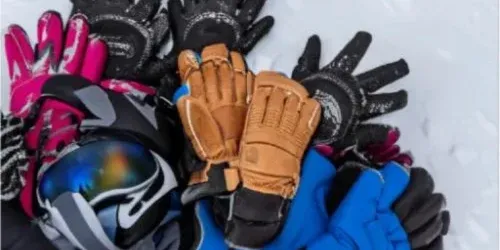
Key Factors in Choosing Ski Gloves
Material
The material of the glove plays a significant role in its performance. Some gloves are made from leather, which offers excellent durability and a natural grip. Synthetic materials, such as nylon or polyester, are also common due to their water and wind resistance.
- Leather Gloves: Leather, known for its durability, is a popular choice for ski gloves. It offers excellent dexterity, enabling smooth hand movements, and over time, molds to the shape of your hand, providing a personalized fit. Leather gloves are also naturally water-resistant, and when treated with a waterproofing agent, they can withstand harsh weather conditions. However, they require more maintenance than gloves made from synthetic materials and are generally more expensive.
- Synthetic Gloves: Synthetic gloves, typically made from materials such as nylon or polyester, are a more affordable alternative to leather gloves. These materials demonstrate superior water and wind resistance, making them ideal for snowy or windy conditions. They are also easier to care for than leather gloves, as they do not require special treatment or conditioning. Some synthetic gloves come with additional features such as removable liners or touchscreen capability. However, they may not offer the same level of dexterity or durability as leather gloves.
- Hybrid Gloves: Hybrid gloves combine the advantages of both materials. The palm area typically features leather for improved grip and durability, while the back of the glove is made from synthetic materials, which offer excellent weather resistance and easy maintenance.
When choosing between leather, synthetic, or hybrid gloves, consider your skiing conditions, budget, and personal preferences. While all these materials can make a great ski glove, the best one for you will depend on your specific needs.

Insulation
When it comes to keeping your hands warm, the insulation of the glove is crucial. There are two main types of insulation: down and synthetic. Down insulation is known for its superior warmth but performs poorly when wet. On the other hand, synthetic insulation can still provide warmth even when damp.
- Down Insulation: Down insulation, derived from the fluff underneath the feathers of geese and ducks, is renowned for its incredible warmth-to-weight ratio. It is incredibly lightweight, making it ideal for those who prefer less bulk in their gloves. Down is also highly compressible, meaning it can be easily packed without losing its ability to loft and insulate effectively. However, its efficiency drops significantly when it gets wet, as it takes a long time to dry. Hence, down-insulated ski gloves are best suited for drier, cold climates where snowfall is light and fluffy.
- Synthetic Insulation: Synthetic insulation, typically made from polyester, is designed to replicate the qualities of down while overcoming some of its drawbacks. It is known for its ability to retain heat even when damp, making it a reliable choice in wet conditions. Moreover, synthetic insulation dries much quicker than down and is generally more durable, capable of handling compression and rough use better. However, it is usually heavier and less compressible than down.
- Hybrid Insulation: Some gloves combine the benefits of both down and synthetic insulation, offering a hybrid solution. They typically use down insulation for superior warmth and synthetic material in areas more prone to getting wet, like the palms, ensuring warmth even in damp conditions.
Choosing between down, synthetic, or hybrid insulation depends on where and how you plan to ski. If you expect cold yet dry conditions and prioritize comfort and dexterity, down could be your best bet. If you're in wetter, more variable conditions, synthetic insulation's performance could prove more reliable. And for those who want the best of both worlds, hybrid gloves are worth considering.

Grip
To ensure optimum performance, the grip of ski gloves is one factor that must be considered seriously. While navigating snowy terrains, a well-textured grip allows for a firm and secure hold on skiing poles, minimizing the risk of slips. Moreover, gloves with a good grip provide better control and stability, which is vital for executing precise maneuvers.
Gloves often incorporate materials like silicone or rubber in their palm and finger areas to enhance grip. Some gloves also use leather palms with additional texturing or patterning that boosts anti-slip properties.
In terms of glove design, pre-curved or articulated fingers can make a significant difference. This design mimics the natural shape of a hand, promoting a more comfortable and effective grip. It's also important to consider the glove's overall fit and adjustability, as a well-fitted glove can improve your hold and handling significantly.

Quality
Diving deeper into the quality aspect, it's important to understand that the construction of the skiing gloves plays a pivotal role in their performance and durability. A well-constructed glove not only ensures excellent functionality but also longevity, providing you with reliable hand protection over multiple skiing seasons.
Glove construction involves several aspects. One crucial element is the stitching. High-quality gloves often feature double stitching or reinforced stitching at critical wear points to prevent tearing, making them more durable. The quality of the materials used, including the fabrics, insulation, and grip-enhancing elements, also significantly impacts the glove's performance.
Furthermore, pay attention to the glove's design aspects, such as waterproof and windproof features, which should be well integrated into the glove's construction. For instance, look for gloves with waterproof treatments on the outer shell or gloves that incorporate a waterproof, breathable membrane for superior weather protection.
Lastly, pay attention to the glove's size, fit, and closure system. Gloves should provide a snug fit without restricting hand movements. An adjustable wrist strap or drawstring closure helps secure the gloves and prevent snow from getting inside. Remember, well-constructed gloves can both enhance your skiing experience and protect your hands effectively from harsh winter conditions.

Sizing
Getting the right size for your ski gloves is an essential aspect that should not be overlooked. When gloves fit properly, they not only provide maximum comfort but also ensure optimal performance. Here are some points to consider while sizing your ski gloves:
- Measuring Your Hand: To get the most accurate size, measure the circumference of your hand at its widest point, excluding your thumb. The measurement is then typically translated into small, medium, large, etc., based on the manufacturer's size guide.
- Fit and Comfort: The gloves should fit snugly around your fingers without restricting movement. They should not be too tight as this can cut off circulation and leave your hands cold. Conversely, if they're too loose, they may not effectively keep out the cold and can compromise your grip.
- Finger Length: The length of the glove fingers should also be considered. The gloves are too small if your fingers are pressing against the ends.
- Strap Adjustments: Consider gloves with adjustable straps or cuffs. These gloves will let you tailor the fit around your wrist to your comfort, ensuring they stay put even during vigorous activity and keep snow from getting inside.
- Try Before You Buy: If possible, try on gloves with the same liners or rings you plan to wear skiing. This will give you a better sense of how they fit and feel.
Remember, different brands may size their gloves differently, so always check the brand's specific size chart before purchasing. Taking the time to find the right fit will ensure your gloves serve you well on the slopes.
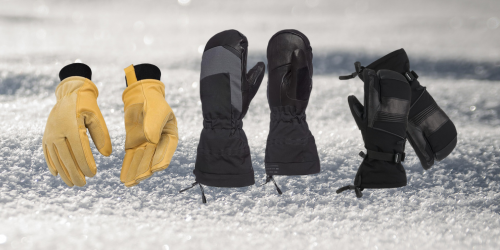
Types of Gloves and Their Pros and Cons
There are three primary types of ski gloves: traditional gloves, mittens, and lobster gloves.
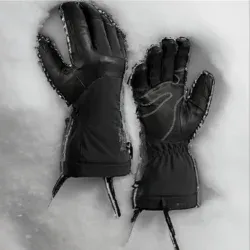
Traditional Gloves
These gloves offer the most dexterity but might not be as warm as other types.
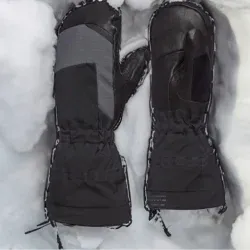
Mittens
Mittens are the warmest option but offer less dexterity.
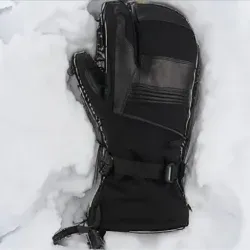
Lobster Gloves
Lobster gloves separate the fingers into two sections, offering a good compromise between warmth and dexterity.
Each type of glove has its pros and cons. Traditional gloves provide better mobility, but mittens are generally warmer. Lobster gloves offer a balance between the two.

Maintenance and Storage
Taking care of your ski gloves can extend their lifespan and ensure they perform at their best. It's important to dry them out after each use to prevent the growth of bacteria and mold. Store them in a cool, dry place away from direct sunlight.

The best gloves for skiing largely depend on personal preference and specific needs. When choosing ski gloves, consider the material, insulation, grip, quality, and sizing. And remember, taking good care of your gloves will keep them in top shape for many seasons to come.









